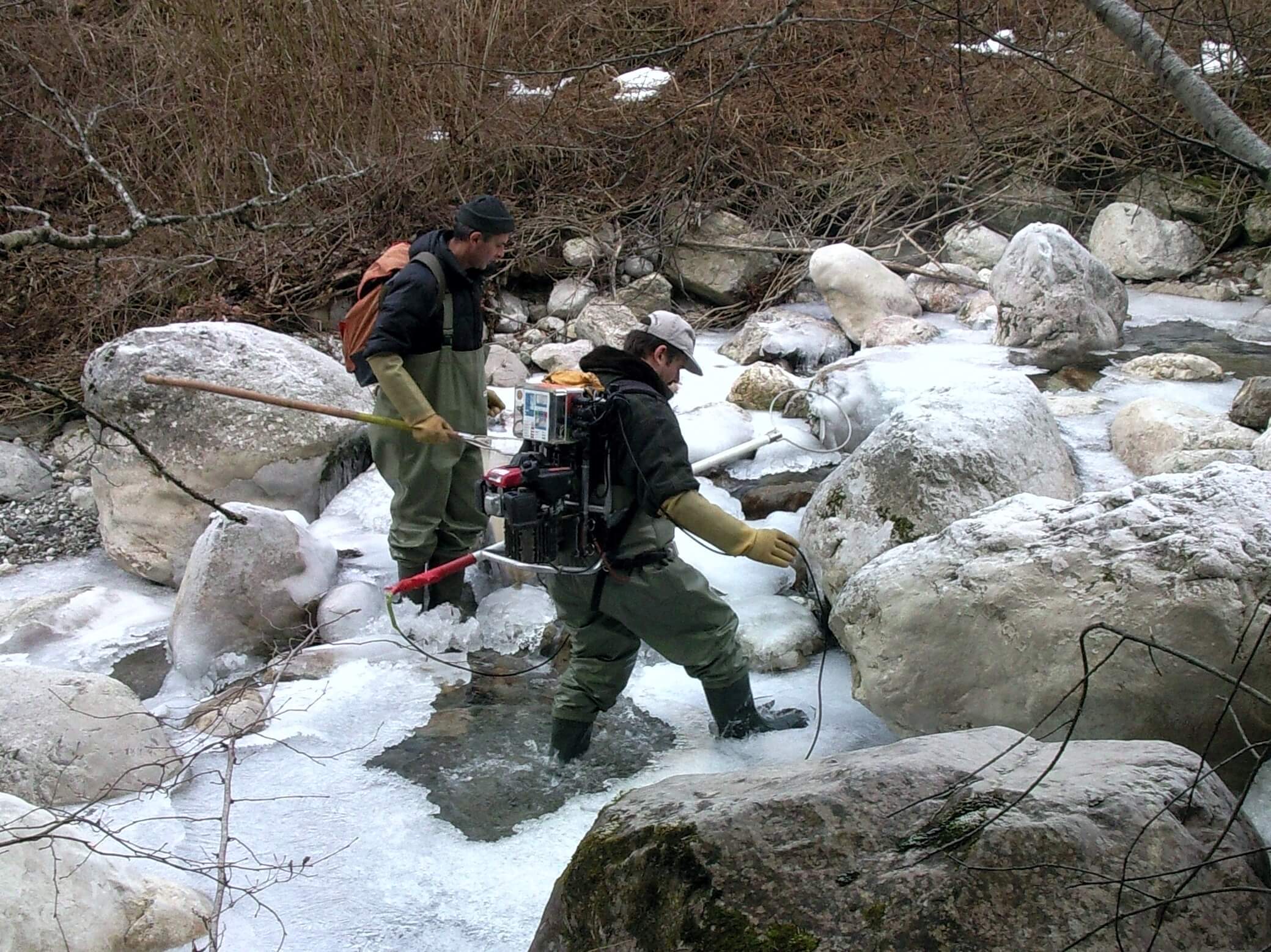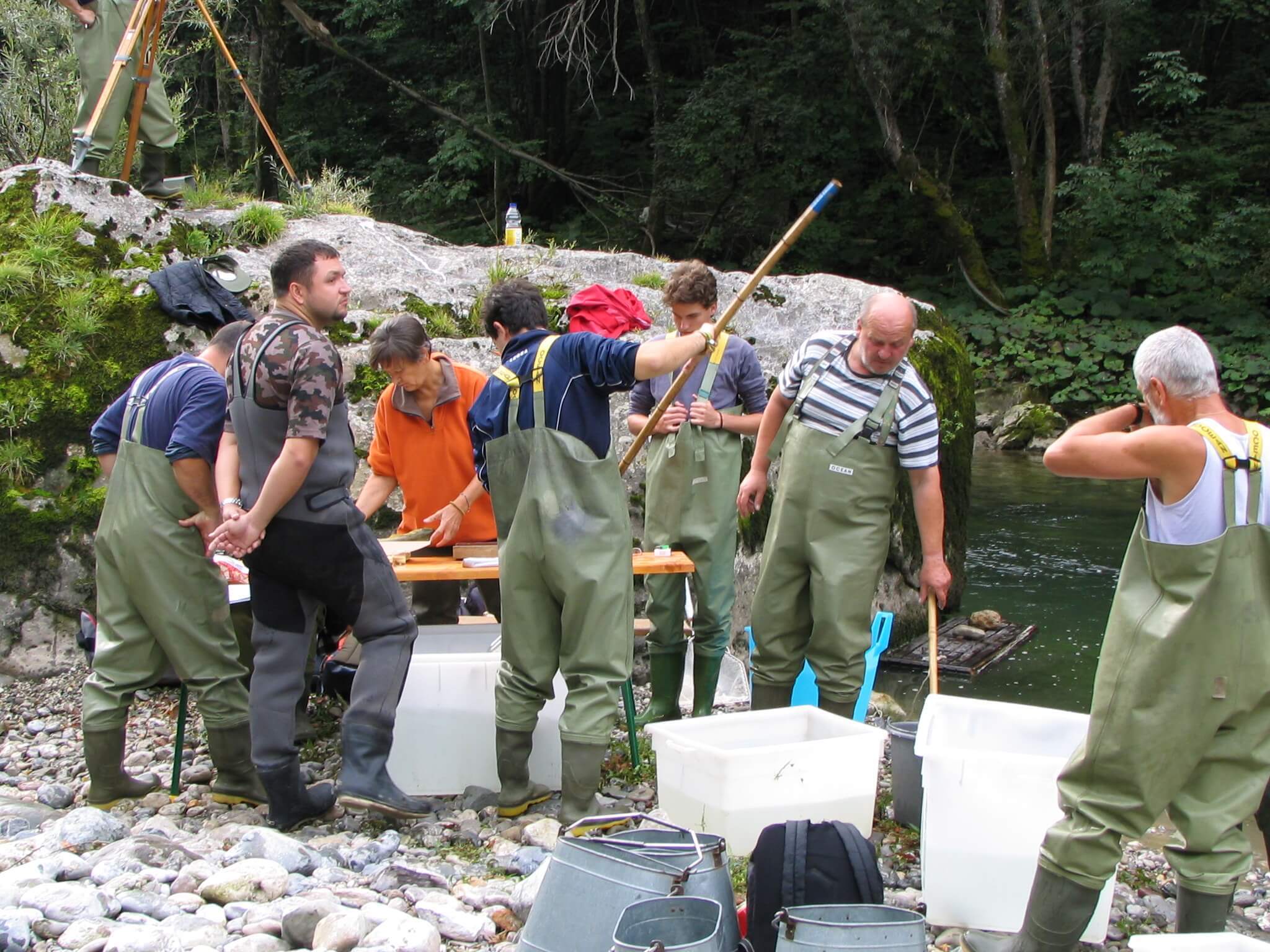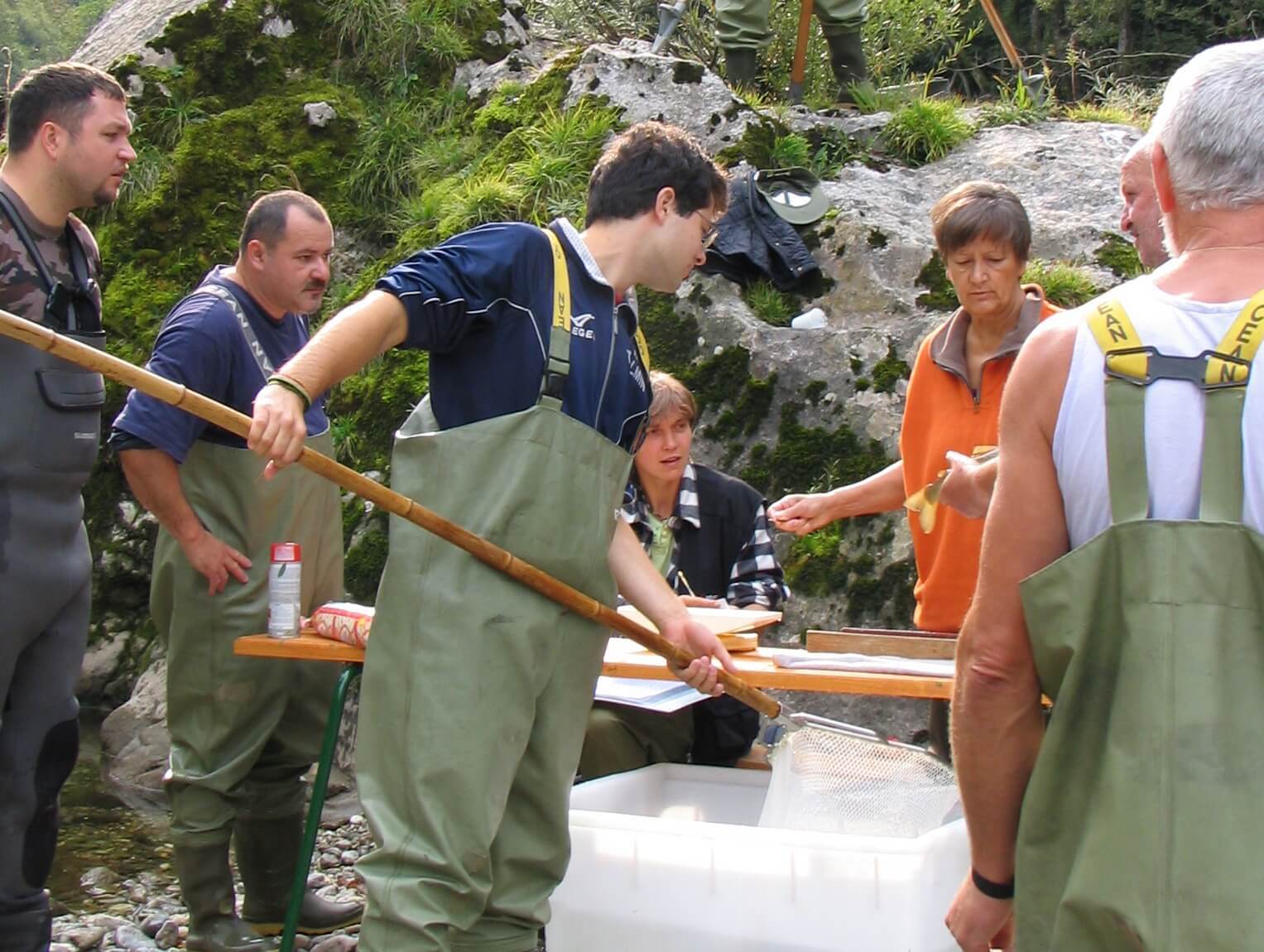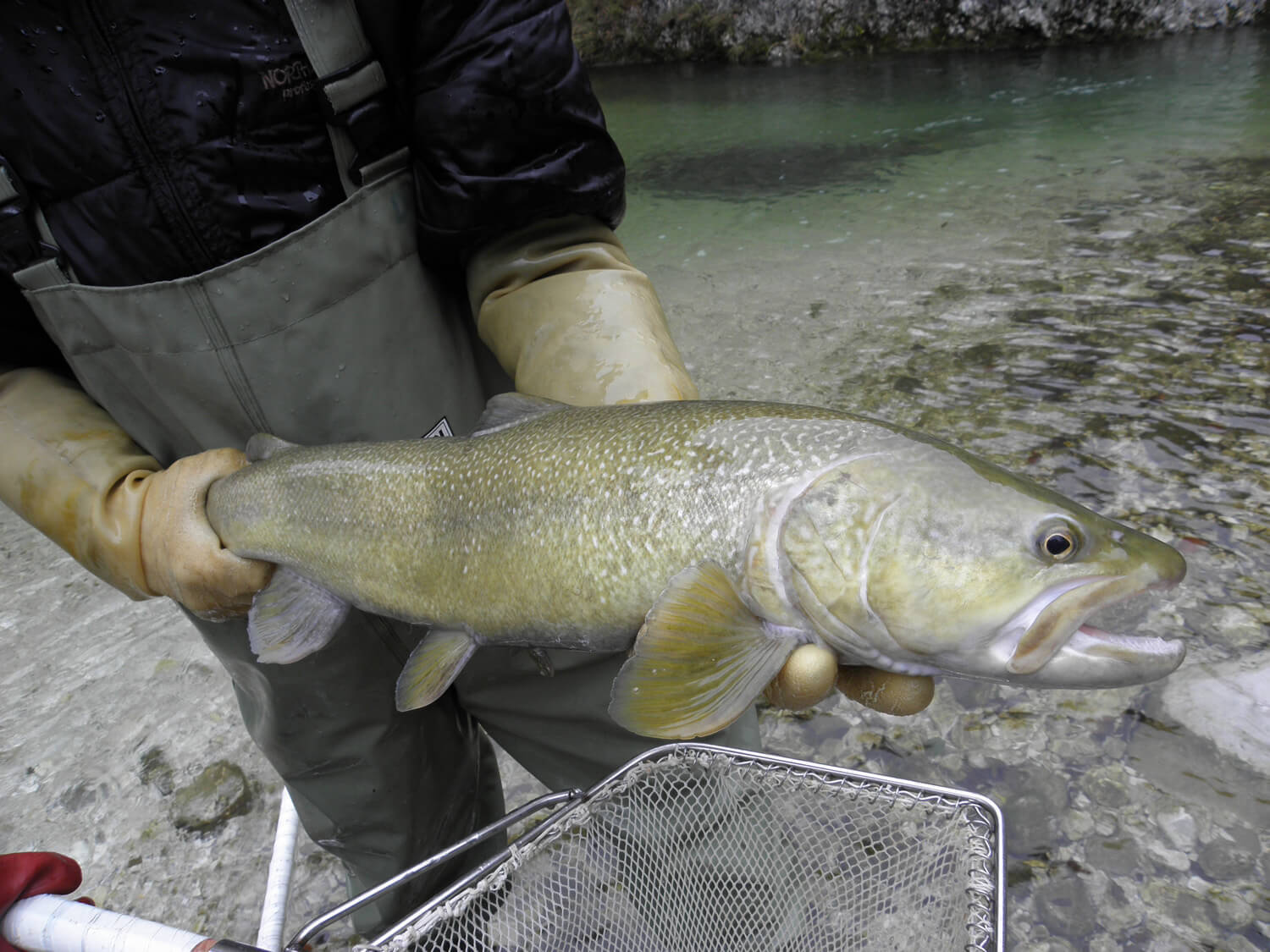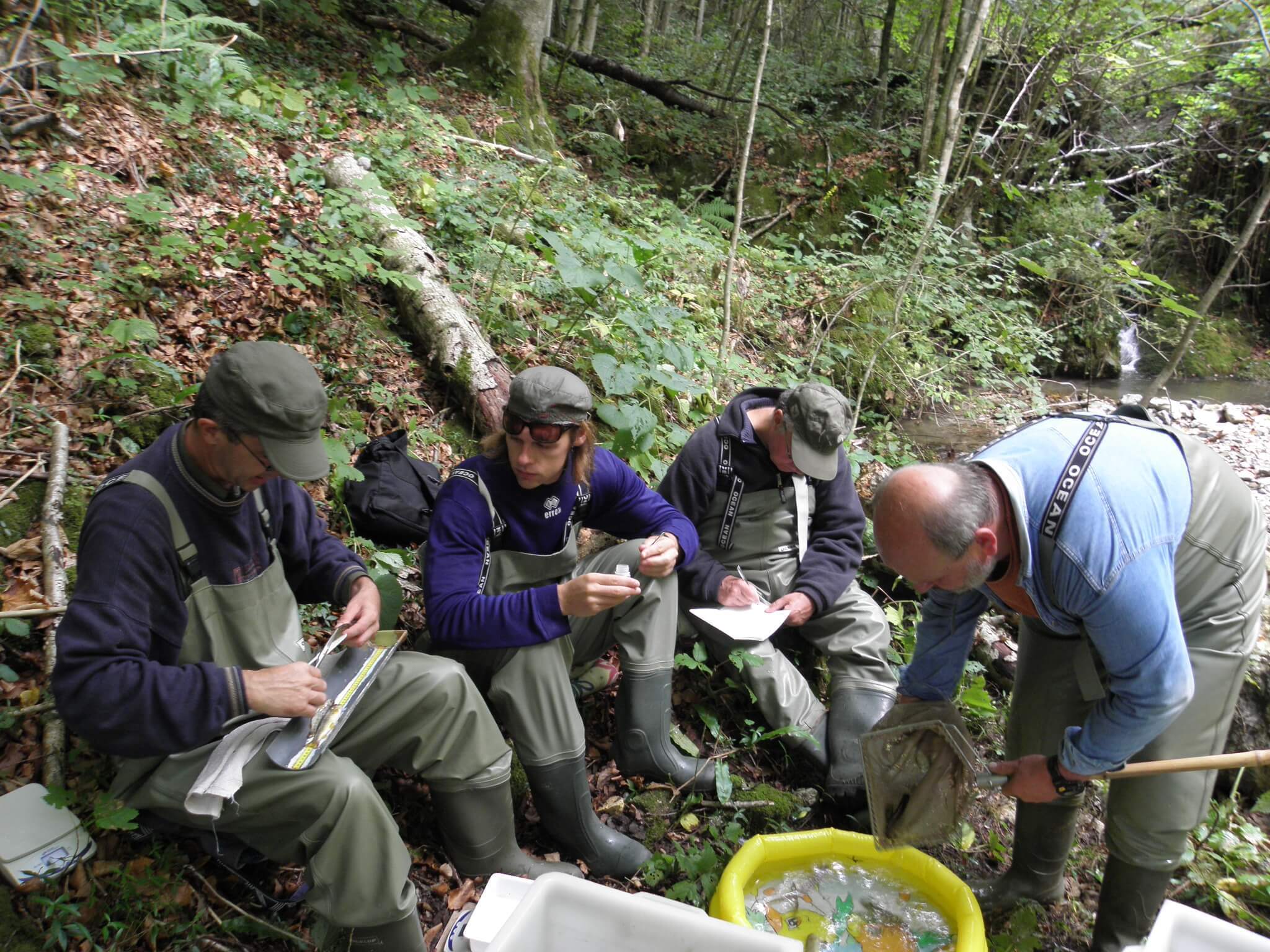
History
Development of the Tolmin Fishing Club
In 2017, the Tolmin Fishing Club celebrated its 70th anniversary. It was originally established as the "Fishing Cooperative for the Tolmin Area" on March 10, 1947, by 21 founding members. In 1952, the cooperative was renamed the Tolmin Fishing Association, and in 1975, it became the Tolmin Fishing Club.
In 1985, the Freshwater Fisheries Act was adopted, under which the Tolmin Fishing Club was granted management of the Tolmin fishing district, which it still manages today.
Membership
In its founding year, the club had 52 members. By 1969, the number had risen to 200, and by 1978 to 400 members. Two years later, membership exceeded 500. Initially, members were mainly residents of the then Municipality of Tolmin. At that time, fishing was not considered a sport, but rather a way to bring a special treat to the angler's table.
In the 1980s, membership expanded to include more anglers from other parts of Slovenia, especially from the Goriška region. The highest number of members was recorded in 1987, with 703 members and 104 juniors.
After Slovenia's independence, membership declined, and by 2007 it had dropped below 400. Currently, the club has around 400 permanent members and 40 juniors. The club is registered and operates in accordance with the Societies Act.
Research in the Tolmin Fishing Club and the Preservation of Marble Trout
The discovery of the first genetically pure population of marble trout in the Zadlaščica River, thanks to the Tolmin Fishing Club, led to intensive research activities, especially after 1993. Initial research on marble trout began already in the 1980s as a result of cooperation between the Fisheries Research Institute of Slovenia and the fishing clubs of the Primorska Fishing Association. In the 1980s, marble trout was listed on the Red List of endangered animal species.
Over time, the research also included genetic studies. In the 1990s, genetics began to be used to distinguish marble trout from its hybrids. A conservation plan for marble trout was developed in 1996. Scientists from various research institutions participated in the studies and analyses, including the local Biotechnical Faculty and several foreign research centers.
More than 20 years of research have provided valuable data for managing our waters and essential information for high-quality fish farming.
ADRIATIC GRAYLING PROJECT
In 2003, the Tolmin Fishing Club, together with its partner Ente Tutela Pesca del Friuli Venezia Giulia, successfully applied to the Phare CBC, SMF Program with the Adriatic Grayling Project. We chose the topic of the Adriatic grayling to facilitate the conservation of the Soča grayling, which belongs to the Adriatic grayling group.
The aim of the project was to determine a habitat for establishing a natural population of Adriatic grayling, improve grayling survival in artificial breeding, start breeding Adriatic grayling, and prepare conservation guidelines for the species. To achieve these goals, a series of activities was carried out. Part of the Tolminka River was studied and assessed as a suitable natural habitat for Adriatic grayling. Based on genetic testing of grayling bred at the Tolminka fish farm, grayling with a majority share of Adriatic grayling genes were included in a new broodstock.
A live food production unit was established to provide necessary food at the beginning of the grayling fry feeding stage. A conservation plan for preserving Adriatic grayling in the upper Soča River basin was prepared and published in the form of a brochure.
